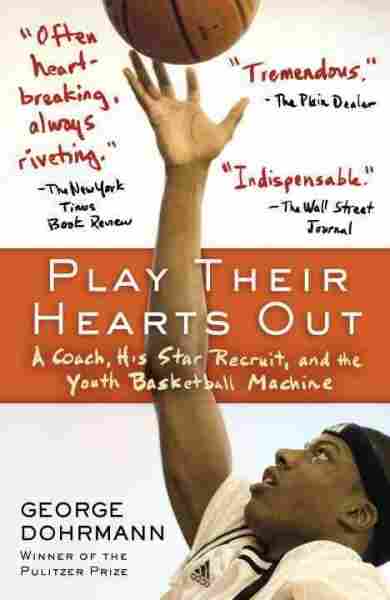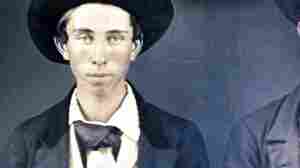Play Their Hearts Out
A Coach, His Star Recruit, and the Youth Basketball Machine
Book Summary
A Pulitzer Prize-winning Sports Illustrated investigative journalist traces the story of a talented young recruit, his coach and his teammates to reveal the realities behind professional basketball and the sacrifices made by prodigy players and their families. A first book. Reprint.
Genres:
NPR stories about Play Their Hearts Out
Note: Book excerpts are provided by the publisher and may contain language some find offensive.
Excerpt: Play Their Hearts Out

Chapter One
The Frank A. Gonzales Community Center sits on the corner of Colton Avenue and E Street in a mostly Latino neighborhood in Colton, among houses with unkempt yards and low-sloped roofs and next to a baseball field with an all-dirt infield. Like many public buildings in the Inland Empire, it is less inviting the closer you get. The bottom third of the building is painted a reddish brown, the rest a dirty pink, and the whole rectangular structure appears in need of a good hosing. During a development spree in the 1990s, many similar structures were builtâ€"elementary schools, community centers, government buildingsâ€"and aesthetics were forsaken for speedy construction. All around the Inland Empire, these buildings rose along with cookie-cutter housing developments, each more soulless than its predecessor.
Standing outside the gymnasium, which takes up the left half of the center, you’re most aware of how the thick concrete walls and steel doors mute the life inside. Sneakers sliding, a leather ball pounding on the wood floor, coaches urging players to get back on defense, parents shouting at their kids to take the open shotâ€"you hear none of it. The milieu of Southern California abounds: cars speeding by on Colton Avenue, the zip of an air gun from one of two auto-repair shops across the street, a constant hum from Interstate 10. The sounds of its residents, meanwhile, remain locked within that windowless cement box.
Inside the gym, on the far side of the court, Joe Keller stood with his arms folded in front of a black golf shirt. He had positioned himself at midcourt, behind the scorer’s table, which struck me as an odd place to stand. Fans seated behind him were forced to either end of the aluminum bleachers to gain a clear view of the court. Keller seemed oblivious to his obstruction, and it may have been intentional; it was like him to believe no one’s view of the court was more important than his.
He watched intently a game between a team from Santa Monica and another from Orange County. The kids on the floor were no older than eleven, some as young as eight, and it was difficult to see basketball greatness amid the chaos on the court. In the time it took me to walk from the door to the far side of the court, one small blond boy had a pass go through his hands as if they were coated in butter and the center for the Orange County team had bounced a pass off a teammate’s leg so strongly that the ball rolled into his team’s bench. Looking at Keller, I wondered if he possessed a clairvoyance that enabled him to see the game and its participants differently, to find greatness in the folly of children.
Another AAU coach, only twenty-five and in his first year of coaching, stood next to Keller. They discussed the players on the court, beginning with the eleven-year-old point guard for the Santa Monica team, the only girl in the tournament. She deftly dribbled through defenders, slipping the ball through her legs and around her back with ease, and her outfit was equally refined. The red rubber band holding back her ponytail matched the red trim on her jersey and on the black Vince Carterâ€"model Nikes she wore.
“That’s Monica DeAngelis,†Keller told the younger coach. “Her dad is smart playing her against boys. She’ll be in the WNBA someday.â€
The last line was a definitive statement; most of what came out of Keller’s mouth was not up for discussion, not that the young coach would have disagreed. He was clearly deferential and at one point folded his arms in front of his chest and widened his stance, striking the same pose as Keller. Talk turned to the point guard for the team from Orange County, an Asian kid with whom the coach was clearly impressed.
“He’s killing people,†the coach said. “You like him?â€
“I don’t do Asians,†Keller responded quickly, as if he’d anticipated the question.
“What do you mean?â€
“Asians don’t get tall enough. Tha

